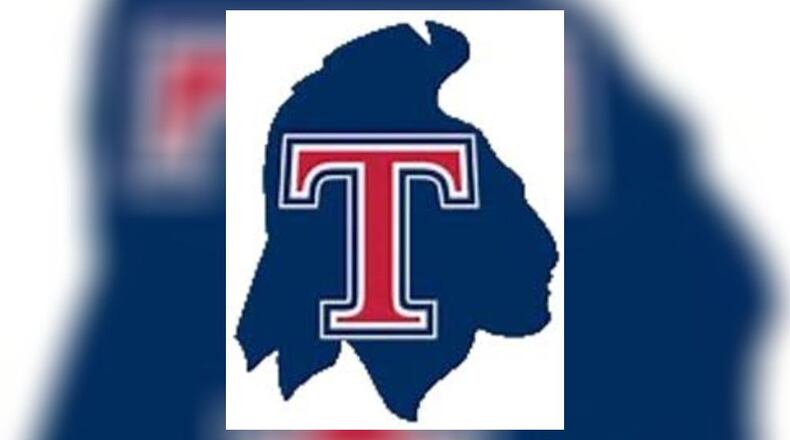Talawanda Schools announced in August it was forming a branding committee to study the district’s Braves mascot after calls by local residents and a national organization to change the logo.
Many speakers in favor of keeping the mascot repeated dictionary definitions of “brave” and the district’s heritage of the Braves as the school’s mascot during the Oct. 15 school board meeting.
Grace Asher said the mascot should remain and cited a group called the Native American Guardian Association that supports keeping such logos so the Native American heritage remains in front of people.
“Educate, not eradicate,” she said is the goal of the organization.
Mary Tharp said the mascot and name are not offensive and use is “an honor to those tribes who passed through the area.”
“We’ve been through this before and it did not pass muster,” Tharp said. “It will not pass muster now.”
In 2010, the district's mascot was the subject of much debate after two groups — Oxford Citizens for Peace and Justice and the Oxford branch of the National Association for the Advancement of Colored People — formed a coalition to change the mascot, a red Native American silhouette with feathers and a hoop earring, citing concerns of racial insensitivity. A third group collected more than 700 signatures on a petition to keep the Braves name and the "warrior head" mascot.
In the end, the board of education decided the Braves name and the mascot would remain.
Then in 2012, the school board chose a new logo with the Native American head as a blue silhouette.
Several speakers, however, said the mascot is degrading to Native Americans and should change.
Jean Pateman, a Talawanda High School senior, argued the symbol is racist even if it was not intended that way originally.
“How you intend something is not always how it is perceived. Everyone may not see it as offensive. The Braves mascot is not ours. It is disrespectful to take things (Native Americans) have earned,” she said. “The Talawanda Braves logo is racist. This country has a long history of ignoring racism.”
Kara Strass, who described her own Myaamia Tribe heritage, said she works with Miami University students with the same heritage as they work to define their own role within their culture. Much of that culture was lost through forced removal from their homes as well as being forbidden to use their own language or to speak of their tribal heritage.
“Those who want to keep (the mascot) argue (changing it) would take away their identity,” Strass said. “Our identities are not, and never will be, equal. True education cannot happen while the Braves mascot exists.”
The committee formed to consider the issue plans to submit two reports to the board in November, according to Talawanda Superintendent Ed Theroux.
The two reports, he said, would be the majority and minority views of the committee as to whether the mascot should or should not change. They are expected to be completed for the board’s November meeting.
“We are nearly finished with the one report and need to do the second,” he said.
With those in hand, he said, the board will set its own timetable for consideration and action on the question.
Nineteen high schools in the Cincinnati-Dayton region use Native American-related nicknames such as Braves, Indians and Warriors, most with an accompanying Indian-related logo. A few use Redskins, which is termed “usually offensive” by Merriam-Webster and “contemptuous” by Dictionary.com.
Last month, a half-dozen speakers urged the state board of education to ban the use of Native American nicknames, logos and mascots for school sports teams, citing negative stereotypes and derogatory images.
More than 20 years ago, Miami University changed its athletic nickname from Redskins to RedHawks, but Ohio High School Athletic Association spokesman Tim Stried said he’s not aware of any Ohio K-12 schools that have changed their nickname away from an Indian-related version.
“Schools have complete control of their own mascots, logos, slogans, mottos and school colors,” Stried said. “The OHSAA is not involved in those local school decisions.”
This article contains previous reporting by staff writer Jeremy P. Kelley.
About the Author
